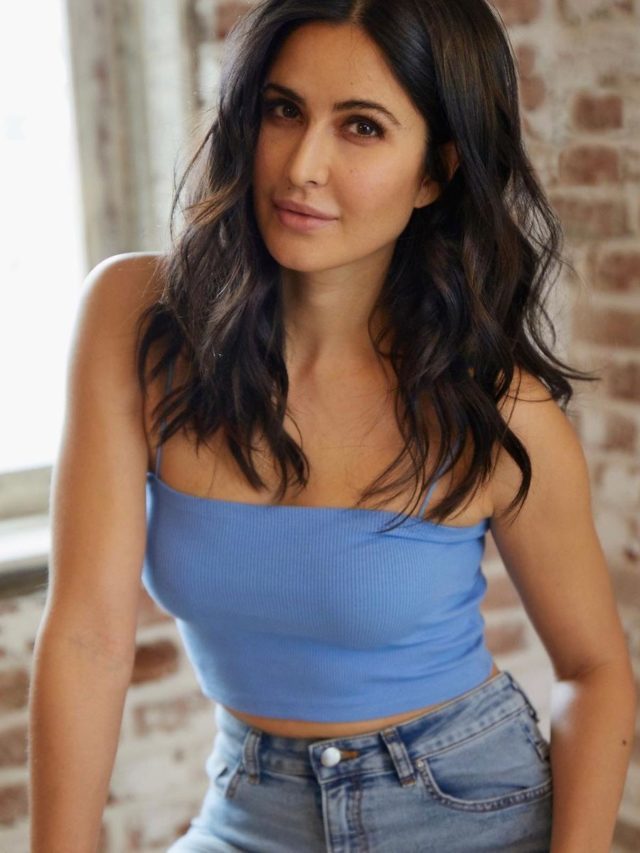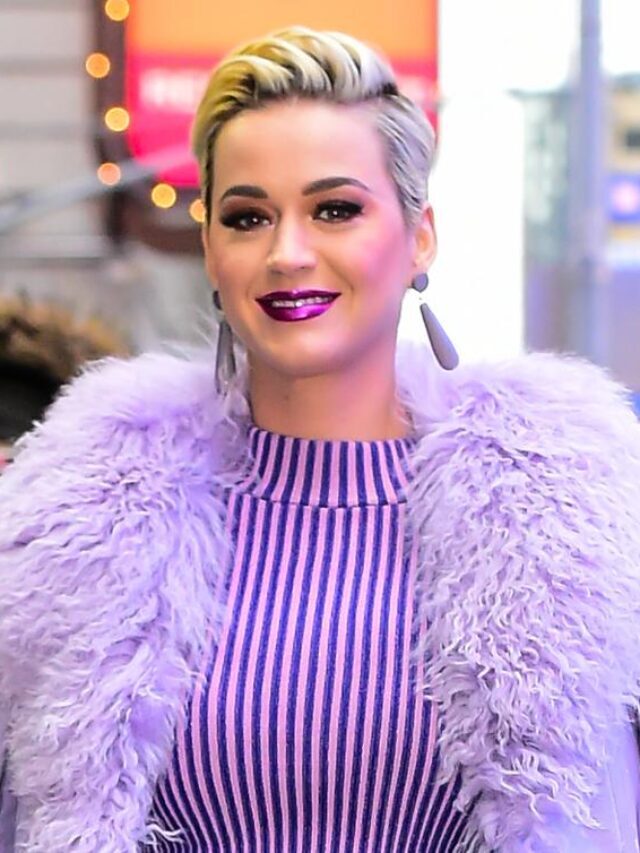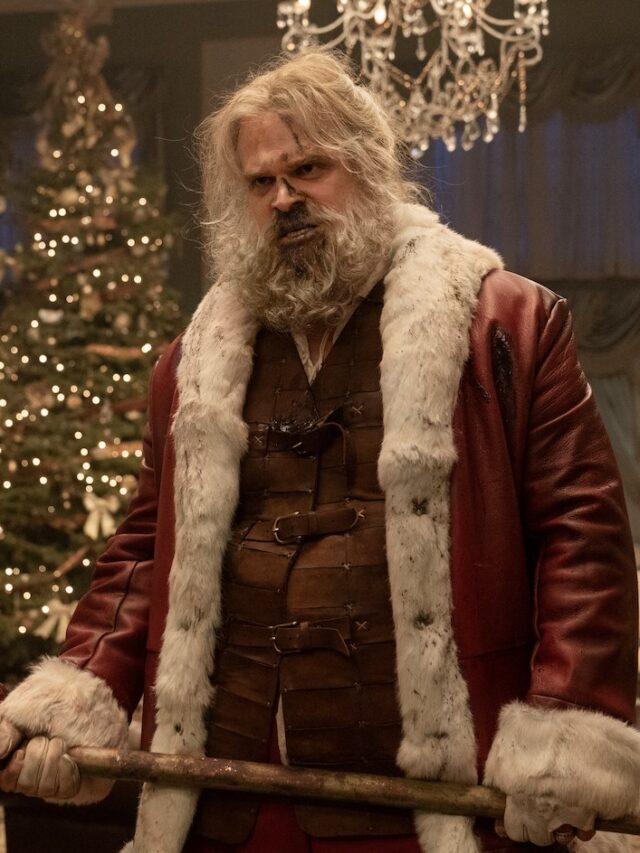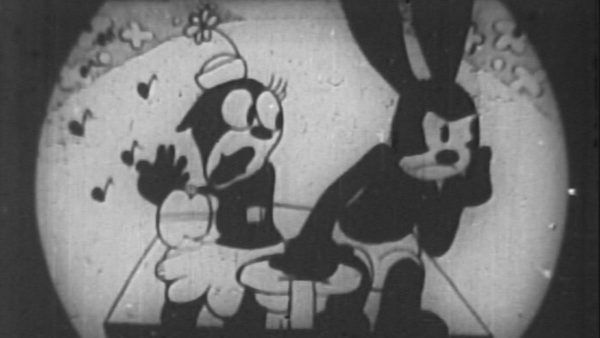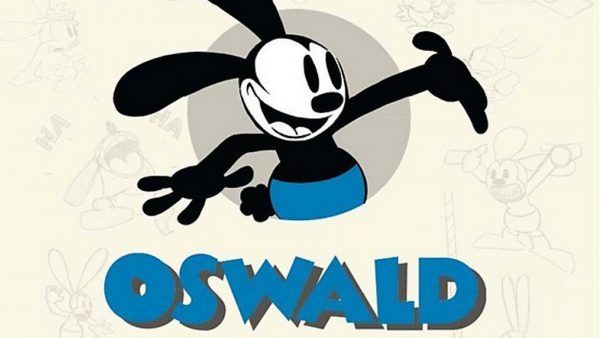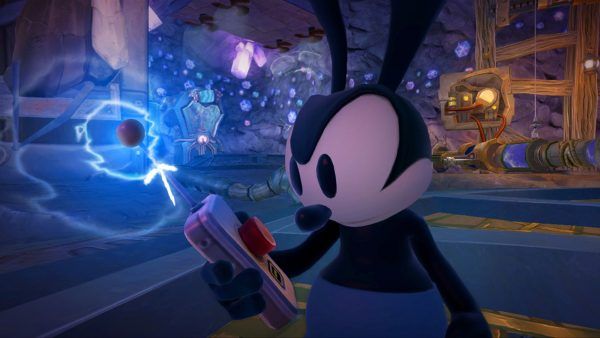Oswald the Lucky Rabbit made his screen debut in the animated short “Trolly Troubles” on September 5, 1927. Walt Disney and Ub Iwerks created the brief, which lasts little over six minutes. To set their character apart from the plethora of animated cats on the market, they went with a rabbit. Springy and amusing, “Trolly Troubles” gets a lot of mileage out of Oswald’s crew of kids (he is a rabbit after all). Although Disney and Iwerks only produced 26 Oswald shorts for Universal Pictures, the character would become very significant to Disney (and later the business he would found), accidentally inspiring the creation of Mickey Mouse and later playing a part in the strangest “trade” in the annals of modern entertainment, only to be seemingly forgotten about once more.
The genuine first Oswald the Lucky Rabbit cartoon, titled “Poor Papa,” was actually finished in the first half of 1927. The first Oswald excursion, however, didn’t sit well with Universal and producer Charles Mintz, who had collaborated with Walt on the live action/animation hybrid “Alice comedy” shorts, and they refused to distribute it. Walt complied with Mintz’s requirement that the character be modified (he insisted that Oswald wear a monocle for whatever reason), but he disagreed with Mintz’s directive that the shorts just be created for a series of amusing gags. Walt wanted Oswald to have a distinctive personality and made it a point “to make Oswald distinctively and essentially OSWALD,” according to Neal Gabler’s outstanding Walt Disney: The Triumph of the American Imagination. “Gags that weren’t impacted on Oswald, as gags were in most cartoons, but instead evolved organically from him – from who he was,” Gabler claims Disney failed to achieve.

Early in 1928, Mintz started negotiating for more Oswald shorts without Walt because he was sick of his demands and was sceptical of his genuine potential. Another producer of the shorts, George Winkler, started making plans for some of Walt’s artists to work at the new location (Iwerks wouldn’t budge). Walt travelled to New York to renegotiate his contract while Mintz was in the process of concluding another agreement with Universal for further Oswald shorts, unaware of the treachery (or perhaps purposely ignorant). Walt scurried to gain his bearings, furiously telegraphing Roy but usually remaining upbeat when Mintz only offered the negative costs, almost $1,000 less than the brothers were currently making. Even after learning that many of his animators had been taken from under him, he continued to strive to cut a different arrangement with Universal that avoided Mintz. However, Mintz had a new contract with the company, and Universal was brutal. The character Walt had developed for the studio would not belong to him. Additionally, Universal urged that Mintz take over the studio from Walt in order to salvage the situation. It was the clincher. Walt pledged to own whatever he produced and to never again work for another person.
According to an apocryphal tradition, he came up with the concept for Mickey Mouse on the train returning to New York. Even though he was required by contract to complete the Oswald cartoons, Walt did create Mickey Mouse soon after the Oswald agreement fell through. And Universal would keep making Oswald shorts until the end of the 1930s, giving him credit for roughly 200 of them. He would be so similar to the character Walt and Ub had designed by the time Universal was done with him—he was in full colour (his overalls were red), and he was oddly lifelike in a sugary cereal salesman sense.
However, the story of Disney and Oswald the Lucky Rabbit did not end here.
When Bob Iger was appointed COO and President of Disney in 2000, he reportedly received a crash course in Disney history, according to the great Dave Bossert’s book Oswald the Lucky Rabbit: The Search for the Lost Disney Cartoons. Oswald the Lucky Rabbit was among the items he discovered. Iger stated to Bossert for the book, “I studied about Walt and the beginnings of the corporation and learned the specifics of Oswald and Mintz. “I knew the narrative in its entirety.” Iger was appointed the CEO of the Walt Disney Company in 2005. He “had a list of things he wanted to do, and one of them was to bring Oswald back to the company,” according to Bossert.
The stars would strangely align in 2005. At that time, NBC outbid ABC to show Sunday Night Football because the network broadcast rights to NFL games were about to expire. (Monday Night Football would continue to air on ESPN, owned by Disney.) Some pundits departed for NBC, while others remained at ABC. Al Michaels, a valuable and well-respected sportscaster, was under contract with ABC. Iger had an idea when he learned that Michaels intended to leave: he should ask for Oswald.
Bossert writes in the book that “several at NBC/Universal didn’t even know they owned the character it had been dormant so long.” The 26 original Oswald shorts that Walt Disney and Ub Iwerks had created were eventually acquired by Disney, along with an odd mash-up of rights to Ryder Cup matches (along with paying a rights fee), Olympic highlights, and expanded highlights from Notre Dame football, the Kentucky Derby, and the Preakness through 2011. (according to ESPN). … cool. At the time, Michaels said, “I’m going to be a trivia answer someday.” It is possible that the agreement was overshadowed by Iger’s announcement of his $7.4 billion purchase of Pixar Animation Studio, which happened a week earlier. However, less than a year into his position, the two deals together made it clear that Iger would handle Disney like a portfolio. Iger would maintain this reputation in the following years by negotiating even wealthier agreements for Fox, Marvel, and Lucasfilm.
Disney didn’t necessarily own all of the Oswald the Lucky Rabbit cartoons, even if they now held the rights to them. And Dave Bossert received a call in 2011.
“I was reading an article in my office about a rediscovered lost Oswald movie called ‘Hungry Hobos,’ which was being offered at a Hollywood memorabilia auction. My email rang as soon as I finished reading the story, and it was an executive asking a question regarding Lee Harvey Oswald, Bossert informed me. And when asked my opinion, I replied, “By the way, I think we should buy that lost Oswald comic that just appeared. And he responded, “Oh, okay. The executive gave Bossert some cash, and Bossert participated in the auction for the lost short bid (and won). But it turned out to be the beginning of something, not the conclusion. After that, Bossert stated, “I reasoned that there must be other missing cartoons out there if one has come to light.” He continued by telling me that Disney rented out 16mm movies in the 1920s and 1930s not just in America but all across the world (“It was like that period’s home entertainment”). So all of the Oswalds had versions in French, Spanish, Italian, and German, he explained.
Bossert was aware that the agreement Disney had reached with Universal was, to put it mildly, unfinished. “There were only 13 prints and 13 titles that Universal held when Disney acquired the rights to Walt’s Oswalds in the infamous trade. In essence, 13 people were missing, he claimed. Bossert then started a compulsive search to find the missing books and finish the collection. Bossert had been able to find “six and a half” when he departed Disney. The half was where? According to him, some of the short films would be edited for foreign markets; occasionally, they would be cut for content, but more frequently than not, they would be spliced into multiple smaller short films, converting a 6-minute video into a few 2-minute films. A 2-minute clip from “Neck in Neck” that was previously unknown surfaced in Japan in 2018, according to Bossert. The owner of the clip was an elderly man who had bought the clip under the name “Speedy Mickey” in the early 1950s. It was 2 minutes of Oswald’s “Neck in Neck” when you thought you were seeing a Mickey animation. He nevertheless accepted the two minutes. The book Oswald the Lucky Rabbit: The Search for the Lost Disney Cartoons, which is vital, is the result of this archaeological animation expedition.
There are still six Oswald shorts missing, and there could be one more. The 27th cartoon is titled “High Up,” and Walt Disney served as its director. They might have been developing concepts for the second 26 because he believed he would succeed. It’s possible that the Oswald Cartoon Studio took that material and finished it or his vision, according to Bossert. “We don’t understand it well enough. Everyone agrees that there are 26, but there is a 27th that deserves more attention. Despite Bossert’s departure from the organisation, the hunt is still very much a part of him. Bossert has a Patreon page on his website to raise money for his inquiry. He also has hope that the remaining missing instalments will be discovered. He declared, “I’m sure some of them are still out there.
And you’d think Disney would be giving Oswald a little more support after all the hassle it took to eventually find him a new home. However, they have largely failed to profit. Oswald made an appearance as a sort of evil Mickey impersonator in a series of videogames called Epic Mickey; some of the shorts were compiled into a limited edition (and long since out-of-print) DVD collection in 2007; Oswald also made an appearance in the 2013 Oscar-nominated short “Get a Horse” and several of the new Mickey Mouse shorts by Paul Rudish, though some of the latter appearances are so subtly placed as to be almost subliminal. Additionally, Oswald may be found in Disney California Adventure in Anaheim, albeit oddly enough, Disney has restricted him to a meet-and-greet location next to a gas and service station bearing his name. Oswald, everyone’s favourite rabbit mechanic, you know. On Disney+, your search for “Oswald the Lucky Rabbit” will regretfully provide no results.
Hopefully Disney will support Oswald in a much more significant way in the future. When speaking with me, Bossert referred to Oswald as “representative of a major cornerstone of the foundation of the company,” and it’s true – it was a character that was extremely important to Walt, was taken from him, unintentionally inspired the creation of Mickey Mouse (and to Walt’s typically closed-looped approach to business and finances), and returned to the company in an extraordinarily unusual and unique way. Oswald should be welcomed home with a party and be treated with the same respect and admiration that Mickey Mouse enjoys. It’s fortunate that Oswald the Lucky Rabbit is back in the Magic Kingdom.
Check out my in-depth look at the making of the movie Atlantis: The Lost Empire for more great Disney content.
Being a binge-watcher himself, finding Content to write about comes naturally to Divesh. From Anime to Trending Netflix Series and Celebrity News, he covers every detail and always find the right sources for his research.


